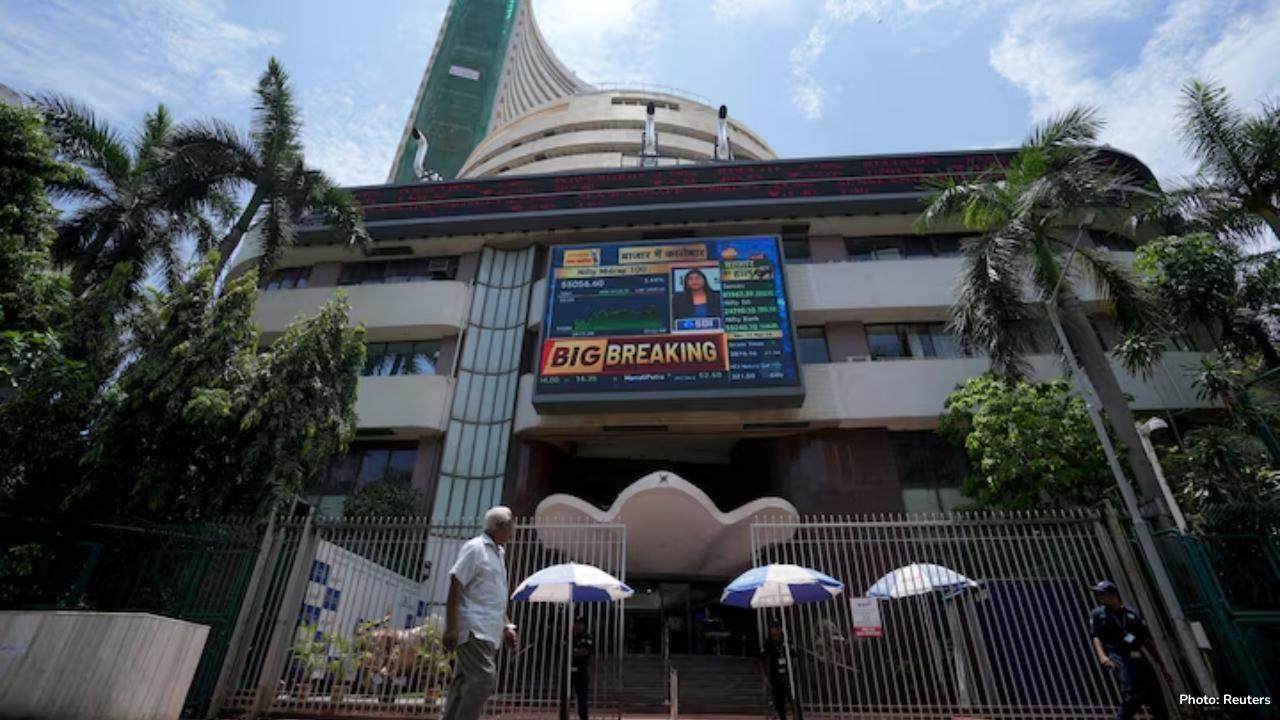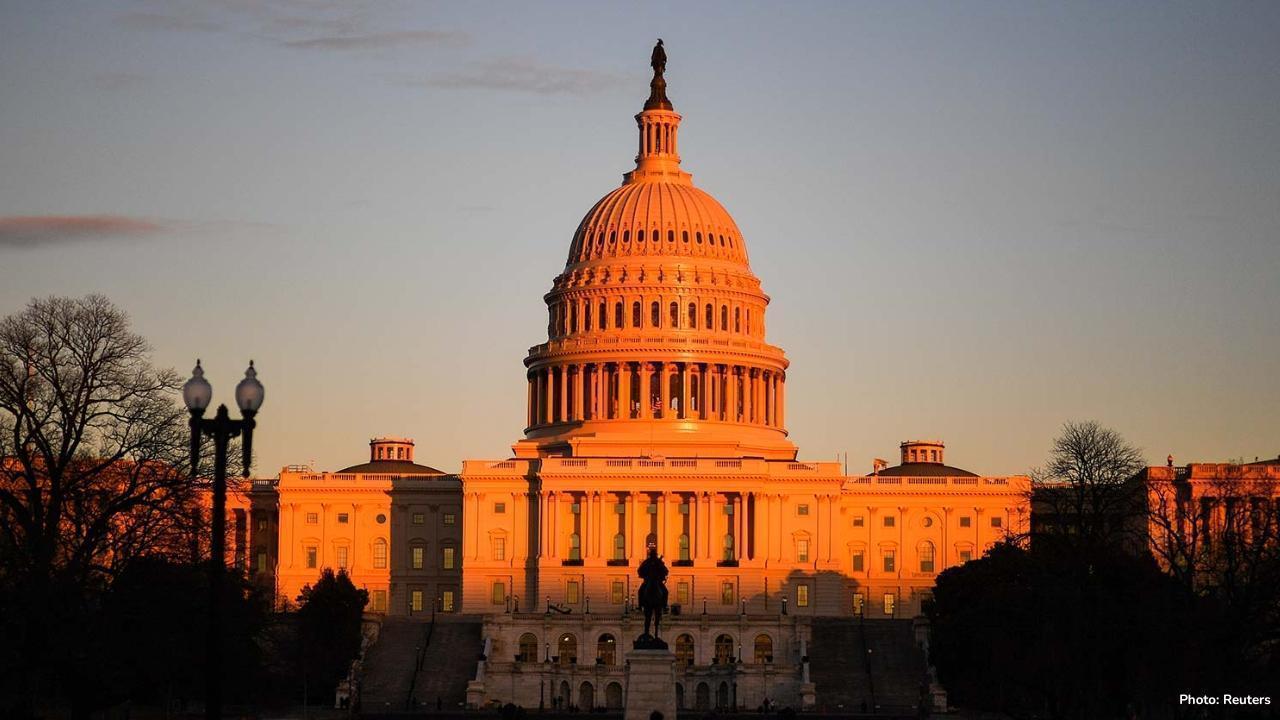
Post by : Monika
In September 2025, foreign investors withdrew $2.7 billion from Indian equities, marking the third consecutive month of significant outflows from the country’s stock markets.
This trend has raised concerns among economists and market watchers about the possibility of a record annual withdrawal from India’s equities. Year-to-date, foreign portfolio investors (FPIs) have pulled a total of $17.6 billion from Indian stocks, making 2025 one of the years with the highest net outflows in recent history.
Reasons for Foreign Investor Withdrawals
Several key factors contributed to this continued exodus of foreign funds from India’s stock markets:
1. Declining Market Returns:
The benchmark Nifty 50 index has fallen approximately 4% over the past year, reducing the attractiveness of Indian equities for foreign investors seeking returns. Many investors have shifted capital to other emerging markets or safer assets with higher yields.
2. U.S.-India Trade Tensions:
One of the primary drivers of the outflows has been the steep tariffs imposed by the United States on certain Indian goods. The tariffs, which reach up to 50%, affect over half of India’s $87 billion exports to the U.S. These trade barriers have raised concerns among foreign investors regarding the profitability of Indian companies, particularly in the manufacturing and IT sectors that have substantial exposure to exports.
3. H-1B Visa Fee Hikes:
The increase in H-1B visa fees in the United States has significantly impacted India’s IT sector. Many major IT firms rely on sending skilled workers to the U.S. to service clients. With higher visa costs, companies face increased expenses, which may affect profitability. As a result, the IT sector saw an outflow of $7.2 billion in foreign investments in September alone, making it the largest contributor to the month’s withdrawal.
4. Weak Corporate Earnings:
Some Indian companies have reported slower-than-expected earnings growth. The combination of rising input costs, weak export demand, and a global economic slowdown has led to cautious investor sentiment. Sluggish earnings make Indian companies less appealing to foreign investors compared to competitors in other markets.
5. Global Uncertainties:
Geopolitical tensions, such as conflicts in Eastern Europe and broader economic concerns in major economies, have led investors to move funds into perceived safer assets, such as U.S. treasuries or gold. Emerging markets like India are more sensitive to global uncertainty, which influences foreign portfolio movements.
Comparison with Previous Years
The $17.6 billion withdrawn from Indian stocks in the January–September period of 2025 is significant but not the highest on record. In 2022, foreign investors pulled $22.3 billion from Indian equities during the same nine-month period, primarily due to the Russia-Ukraine war, rising global interest rates, and a strong U.S. dollar.
However, after markets began to expect U.S. interest rate cuts in late 2022, foreign investment resumed, and the total net outflow for the full year was $16.5 billion. If the 2025 trend continues, it could surpass previous records, making it a historically notable year for foreign investment outflows.
Sector-wise Impact
Information Technology (IT):
The IT sector has been the hardest hit, largely due to the combination of U.S. tariffs and H-1B visa fee hikes. Companies such as TCS, Infosys, and Wipro experienced substantial reductions in foreign holdings, reflecting investor concerns about their ability to sustain profitability in a more expensive operating environment in the U.S.
Financial Services:
The banking and financial services sector has also seen some outflows, but to a lesser extent than IT. While domestic economic growth supports these companies, concerns about global investment patterns and interest rates have tempered foreign enthusiasm.
Energy and Metals:
Interestingly, sectors such as energy and metals have remained relatively resilient. Companies with strong domestic demand and limited U.S. exposure have seen more stable foreign investment, reflecting a selective approach by investors.
Stock Market Volatility:
The Sensex and Nifty indices have experienced increased volatility. Foreign investors’ selling pressure, combined with domestic concerns, has led to swings in stock prices. Analysts note that while domestic retail investors have stepped in to some extent, they have not fully offset the impact of foreign outflows.
Indian Rupee Weakening:
The Indian rupee has weakened against the U.S. dollar, reaching a historic low of 88.80. This depreciation is partly due to the sustained outflows and reflects broader concerns about India’s external account and trade balance. A weaker rupee makes imports more expensive, which can contribute to inflationary pressures.
Government and RBI Response
The Indian government and the Reserve Bank of India (RBI) have been closely monitoring the situation. Several measures have been taken to stabilize markets and encourage investment:
Consumption Tax Cuts:
The government has implemented cuts in the Goods and Services Tax (GST) on certain goods, including automobiles, electronics, and consumer products. These measures aim to boost domestic consumption and economic activity, providing indirect support to corporate earnings and investor sentiment.
Policy Support for Investment:
The government is actively promoting foreign direct investment (FDI) in key sectors to attract longer-term capital. These initiatives include reforms to make it easier for foreign companies to invest in India, reduce bureaucratic hurdles, and improve the ease of doing business.
RBI’s Monetary Policy:
The RBI has maintained an accommodative monetary stance to support growth while keeping an eye on inflation. Lower interest rates can encourage domestic borrowing and investment, partially offsetting the effects of foreign outflows.
Potential for Recovery
Despite the negative trend in September 2025, analysts believe there is potential for recovery in foreign investment:
Improving Valuations:
Stock prices have fallen in response to outflows, making certain companies more attractively priced for long-term investors seeking value opportunities.
Sector-specific Opportunities:
While IT faces challenges, sectors such as renewable energy, domestic consumer goods, and metals may attract foreign capital due to strong growth potential.
Global Interest Rate Trends:
If interest rates in major economies, particularly the U.S., stabilize or fall, investors may redirect funds to higher-growth emerging markets like India.
Policy Reforms:
Continued implementation of government reforms, including incentives for local manufacturing and foreign investment, can strengthen confidence in the Indian equity market.
Broader Economic Implications
Foreign portfolio outflows can influence the broader economy in several ways:
Cost of Capital:
Outflows increase market volatility, which can raise the cost of capital for companies seeking to raise funds through equity markets.
Exchange Rate Effects:
The weakening rupee affects import costs and could lead to higher inflation if sustained over time.
Investor Sentiment:
Sustained outflows may dampen domestic and foreign investor confidence, affecting investment decisions across sectors.
The withdrawal of $2.7 billion by foreign investors from Indian stocks in September 2025 highlights the sensitivity of India’s equity markets to global events, trade policies, and sector-specific challenges. While these outflows pose near-term risks, the Indian government’s policy interventions, supportive RBI measures, and potential for improved corporate performance provide a foundation for recovery.
Going forward, the trajectory of foreign investment in India will depend on a combination of domestic reforms, sectoral performance, and global economic developments. Monitoring these factors will be crucial for investors, policymakers, and market analysts in understanding the long-term health of India’s equity markets.
Indian Rupee Stock Market Volatility










Dodgers Win Game 1 of Wild Card Series Against Reds
The Dodgers beat the Reds 10-5 in Game 1 of the Wild Card Series. Ohtani and Hernández hit two home

Tyreek Hill Suffers Major Knee Injury, Out for the Season
Miami Dolphins' star receiver Tyreek Hill tears ACL and other ligaments in win over Jets; season-end

China Raises Flag at Disputed Shoal in National Day Ceremony
On China’s National Day, its coast guard held a flag ceremony at Scarborough Shoal, asserting contro

Netanyahu Bets Big on Trump’s Gaza Plan, Faces Home Risks
Netanyahu supports Trump’s Gaza peace plan to regain global support, but his far-right partners in I

Ukraine’s frontline cities face fear but refuse to give up
In Ukraine’s frontline towns, people live with fear and danger daily, yet they show courage, refusin

US Government Shuts Down After Congress Fails to Agree
On October 1, 2025, the U.S. government began a partial shutdown due to Congress's inability to pass